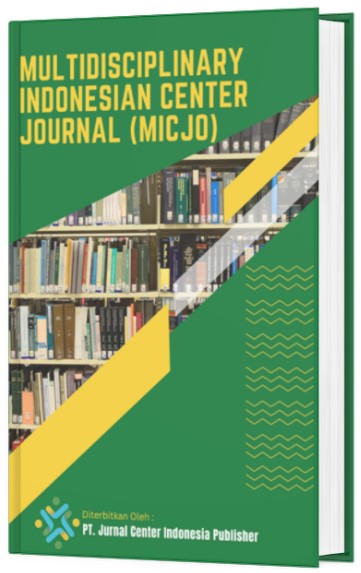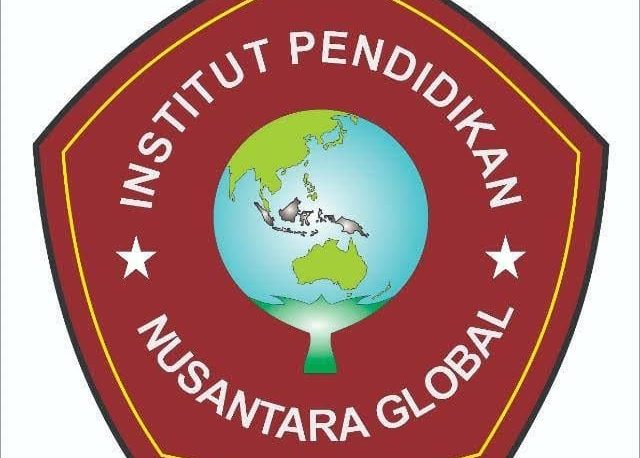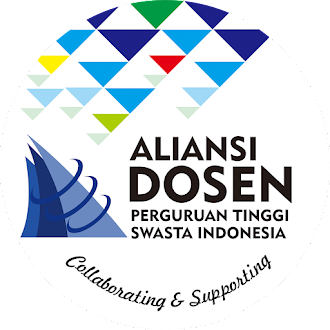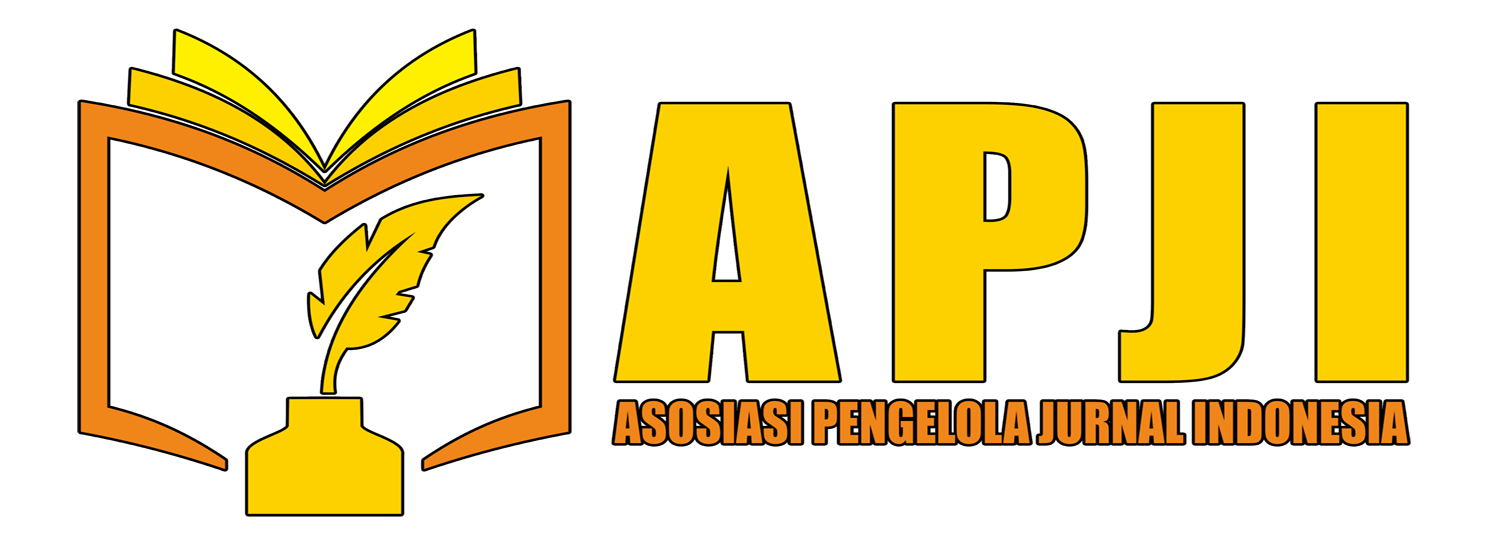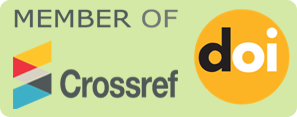HEALTH LITERACY ACROSS THREE DOMAINS AND SOCIO-DEMOGRAPHIC DETERMINANTS IN A NON-COMMUNICABLE DISEASE POPULATION IN EASTERN BOLAANG MONGONDOW DISTRICT: A CROSS SECTIONAL STUDY
DOI:
https://doi.org/10.62567/micjo.v2i3.1261Keywords:
Socio-demographics, health literacy, three domains of health; NCDsAbstract
This study aimed to obtain information about socio-demographic factors associated with HL of NCD patients in East Bolaang Mongondow Regency. The method used was quantitative method with cross sectional study design with a total sample of 383 NCD patients (purposive sampling) with stratified sampling technique. Data were collected using questionnaires both socio and demographics and HL of NCD patients. The results of this study were [education (p=0.023, OR=2.711); gender (p=0.017, OR=2.001); language (p=0.001, OR=1.013); age (p=0.020, OR=2.968); employment status (p=0.001, OR=1.248); residence (p=0.012, OR=2.068); personal health condition (p=0.031, OR=5.840); access to health information (p=0.020, OR=2.968). In the logistic regression test, the personal health condition factor was most associated with HL of NCD patients (p=0.010, OR=5.840). In conclusion, the study showed that socio-demographic factors (education, gender, language, age, employment status, residence, personal health condition and access to health information simultaneously or partially influenced the HL of patients with NCDs. The most dominant factor associated with HL of patients with NCDs was personal health conditions. The role of health workers provides many sources of information to develop and learn solutions and support for people with various types of NCDs.
Downloads
References
Abdullah, A., Liew, S. M., Salim, H., Ng, C. J., & Chinna, K. (2019). Prevalence of limited health literacy among patients with type 2 diabetes mellitus: A systematic review. PLoS ONE, 17(1 January), 1–16. https://doi.org/10.1371/journal.pone.0216402
Achieving a Healthier Montana. (2023). Advancing Health Literacy with Inclusive Communication Achieving a Healthier Montana. https://dphhs.mt.gov/ahealthiermontana
Akbariza, F. M., & Handayani, D. Y. (2023). Analisis Faktor-Faktor Yang Mempengaruhi Literasi Kesehatan Pada Penderita Diabetes Mellitus Tipe 2. Jurnal Ilmiah Multi Disiplin Indonesia, 2(5), 885–893. https://journal.ikopin.ac.id/index.php/humantech/article/view/3169?utm_source=chatgpt.com
Alfan, M. M., & Wahjuni, E. S. (2020). The Relationship between Health Literacy and Healthy Behavior Habits of Students of the Faculty of Sports Sciences, State University of Surabaya. Jurnal Pendidikan Olahraga Dan Kesehatan, 8(1), 133–137. https://ejournal.unesa.ac.id/index.php/jurnal-pendidikan-jasmani/issue/archive
Aljassim, N., & Ostini, R. (2020). Health literacy in rural and urban populations: A systematic review. Patient Education and Counseling, 103(10), 2142–2154. https://doi.org/10.1016/j.pec.2020.06.007
Almaleh, R., Helmy, Y., Farhat, E., Hasan, H., & Abdelhafez, A. (2017). Assessment of health literacy among outpatient clinics attendees at Ain Shams University Hospitals, Egypt: a cross-sectional study. Public Health, 151, 137–145. https://doi.org/10.1016/j.puhe.2017.06.024
Alolayyan, M. N., Alyahya, M. S., Alalawin, A. H., Shoukat, A., & Nusairat, F. T. (2020). Health information technology and hospital performance the role of health information quality in teaching hospitals. Heliyon, 6(10), 1–12. https://doi.org/10.1016/j.heliyon.2020.e05040
Amoah, P. A., Musalia, J., & Abrefa Busia, K. (2022). Health Behaviors and Health Literacy: Questing the Role of Weak Social Ties Among Older Persons in Rural and Urban Ghana. Frontiers in Public Health, 10(February). https://doi.org/10.3389/fpubh.2022.777217
Arrahman, K. A. (2019). Overview of Health Literacy in Patients at LP2M Health Service Center, University of Jember [Jember University]. In Digital Repository Universitas Jember. https://repository.unej.ac.id/discover
Asriadi, A. (2021). Health Literacy Measurement Instrument : Systematic Review. Voice of Midwifery, 11(2), 33–41. https://doi.org/10.35906/vom.v11i2.146
Ayumaruti, D., Dien Anshari, & Evi Martha. (2023). Determinan Sosial yang Berhubungan dengan Tingkat Literasi Kesehatan Mental Mahasiswa S1 Reguler Angkatan 2018 Universitas Andalas Provinsi Sumatera Barat. The Indonesian Journal of Health Promotion, 6(12), 2539–2549. https://doi.org/10.56338/mppki.v6i12.4049
Badan Pusat Statistik Provinsi Sulawesi Utara. (2023). Prevalensi PTM di Kabupaten/Kota di Provinsi Sulawesi Utara. Badan Pusat Statistik Provinsi Sulawesi Utara. https://sulut.bps.go.id/id/news/2024/09/09/599/rilis-publikasi-statistik-kesehatan-provinsi-sulawesi-utara-2023.html
Baker, D. W., Gazmararian, J. A., Sudano, J., & Patterson, M. (2019). The Association Between Age and Health Literacy Among Elderly Persons. Journal of Gerontology: SOCIAL SCIENCES, 55B(6), S368–S374. https://doi.org/10.1093/geronb/55.6.S368
Bangladesh Society of Medicine. (2011). Non-Communicable Disease Risk Factor Survey Bangladesh 2010 Non-Communicable Disease Risk Factor Survey.
Berens, E. M., Vogt, D., Messer, M., Hurrelmann, K., & Schaeffer, D. (2016). Health literacy among different age groups in Germany: results of a cross-sectional survey. BMC Public Health, 16(1), 1–8. https://doi.org/10.1186/s12889-016-3810-6
Berkman, N. D., Sheridan, S. L., Donahue, K. E., Halpern, D. J., & Crotty, K. (2011). Low Health Literacy and Health Outcomes: An Updated Systematic Review. Annals of Internal Medicine, 155(2), 97–107. https://doi.org/10.7326/0003-4819-155-2-201107190-00005
Bhatt, N., Boggio, L., & Simpson, M. L. (2021). Using an educational intervention to assess and improve disease-specific knowledge and health literacy and numeracy in adolescents and young adults with haemophilia A and B. Haemophilia, 27(2), 229–236. https://doi.org/10.1111/hae.14228
Bhusal, S., Paudel, R., Gaihre, M., Paudel, K., Adhikari, T. B., & Pradhan, P. M. S. (2021). Health literacy and associated factors among undergraduates: A university-based cross-sectional study in Nepal. PLOS Global Public Health, 1(11), 1–11. https://doi.org/10.1371/journal.pgph.0000016
Blom, S., Lindh, F., Lundin, A., Burström, B., Hensing, G., & Löve, J. (2024). How gender and low mental health literacy are related to unmet need for mental healthcare: a cross-sectional population-based study in Sweden. Archives of Public Health, 82(1), 1–11. https://doi.org/10.1186/s13690-023-01228-7
Bogart, K. R., Frandrup, E., Locke, T., Thompson, H., Weber, N., Yates, J., Zike, N., & Breaker, A. R. H. (2017). “Rare place where I feel normal”: Perceptions of a social support conference among parents of and people with Moebius syndrome. Research in Developmental Disabilities, 64(March), 143–151. https://doi.org/10.1016/j.ridd.2017.03.014
Brîndușe, L. A., Eclemea, I., Neculau, A. E., Păunescu, B. A., Bratu, E. C., & Cucu, M. A. (2024). Rural versus urban healthcare through the lens of health behaviors and access to primary care: a post-hoc analysis of the Romanian health evaluation survey. BMC Health Services Research, 24(1), 1341. https://doi.org/10.1186/s12913-024-11861-9
Buvinic, M., Furst-Nichols, R., & Koolwal, G. (2014). Mapping Gender Data Gaps. In Data2X (Issue March). data2X.
Cabellos-García, A. C., Castro-Sánchez, E., Martínez-Sabater, A., Díaz-Herrera, M. Á., Ocaña-Ortiz, A., Juárez-Vela, R., & Gea-Caballero, V. (2020). Relationship between determinants of health, equity, and dimensions of health literacy in patients with cardiovascular disease. International Journal of Environmental Research and Public Health, 17(6). https://doi.org/10.3390/ijerph17062082
Central Statistics Agency of North Sulawesi Province. (2024). North Sulawesi Province Health Statistics Publication Release 2023. Central Statistics Agency of North Sulawesi Province. https://sulut.bps.go.id/id/news/2024/09/09/599/rilis-publikasi-statistik-kesehatan-provinsi-sulawesi-utara-2023.html?utm_source=chatgpt.com
Chen, X., Orom, H., Hay, J. L., Waters, E. A., Schofield, E., Li, Y., & Kiviniemi, M. T. (2017). Differences in Rural and Urban Health Information Access and Use. Physiology & Behavior, 176(1), 100–106. https://doi.org/10.1177/0022146515594631.Marriage
Chu, J. N., Sarkar, U., Rivadeneira, N. A., Hiatt, R. A., & Khoong, E. C. (2022). Impact of language preference and health literacy on health information-seeking experiences among a low-income, multilingual cohort. Patient Education and Counseling, 105(5), 1268–1275. https://doi.org/10.1016/j.pec.2021.08.028
Dewanti, L., Ardiana, A., Nur, K. R. M., Wijaya, D., & Afandi, A. T. (2023). The Relationship between Health Literacy Level and the Implementation of Healthy Lifestyles in Farmers in Southeast Village, Bondowoso Regency. NERS Jurnal Keperawatan, 19(2), 88. https://doi.org/10.25077/njk.19.2.88-98.2023
Ditiaharman, F., Agsari, H., & Syakurah, R. A. (2022). Health Literacy and Behavior of Seeking Internet Health Information in High School Students. PREPOTIF : Jurnal Kesehatan Masyarakat, 6(1), 355–365. https://doi.org/10.31004/prepotif.v6i1.2762
Ehmann, A. T., Ög, E., Rieger, M. A., & Siegel, A. (2021). Work-related health literacy: A scoping review to clarify the concept. International Journal of Environmental Research and Public Health, 18(19). https://doi.org/10.3390/ijerph18199945
European Foundation. (2011). Employment Status And Health.
Fatahya, & Abidin, F. A. (2022). Mental Health Literacy of Early Adult Social Media Users. Higeia Journal Of Public Health Research And Development, 6(2), 165–175. https://doi.org/10.15294 /higeia.v6i2.49871
Febriani, D. H. (2020). Health Literacy pada Pasien Diabetes Mellitus Tipe 2. Media Ilmu Kesehatan, 9(2), 127–132. https://garuda.ristekbrin.go.id/documents/detail/2251586
Firman, Baharuddin, N. H., & Nugroho, F. E. (2023). Health Literacy Level in Diabetes Patients at Primary Health Centers ( Puskesmas ) in Yogyakarta City. 6(1), 1–18.
Fonna, Z., Abdullah, A., & Arifin, V. N. (2024). Determinants of Situational Factors Related to Mental Health Literacy in Students. Surya Medika: Jurnal Ilmiah Ilmu Keperawatan Dan Ilmu Kesehatan Masyarakat, 19(1), 1–8. https://doi.org/10.32504/sm.v19i01.907
Garcia-Codina, O., Amil Bujan, P., Juvinyà-Canal, D., Gonzalez Mestre, A., Masachs-Fatjó, E., Saltó Cerezuela, E., & Blay Pueyo, C. (2016). Health literacy in Catalonia: Situation Analysis. International Journal of Integrated Care, 16(6), 360. https://doi.org/10.5334/ijic.2908
Garcia-Codina, O., Juvinyà-Canal, D., Amil-Bujan, P., Bertran-Noguer, C., González-Mestre, M. A., Masachs-Fatjo, E., Santaeugènia, S. J., Magrinyà-Rull, P., & Saltó-Cerezuela, E. (2019). Determinants of health literacy in the general population: Results of the Catalan health survey. BMC Public Health, 19(1), 1–12. https://doi.org/10.1186/s12889-019-7381-1
Gokzen, A., Erden, Z., & Kinikli, G. İ. (2022). receiving physiotherapy and rehabilitation services. Journal of Exercise Therapy and Rehabilitation, 9(3), 205–213. https://doi.org/10.15437/jetr.989563
Greenhalgh, T. (2015). Health literacy: Towards system level solutions. BMJ (Online), 350(February), 24–25. https://doi.org/10.1136/bmj.h1026
Güner, M. D., & Ekmekci, P. E. (2019). Health Literacy Level of Casting Factory Workers and Its Relationship With Occupational Health and Safety Training. Workplace Health and Safety, 67(9), 452–460. https://doi.org/10.1177/2165079919843306
Haeger, C., Lech, S., Messer, M., & Gellert, P. (2023). Urban-rural differences in health literacy in the metropolitan area of Berlin, Germany, and its surroundings. European Journal of Public Health, 33(4), 561–567. https://doi.org/10.1093/eurpub/ckad070
Heine, M., Lategan, F., Erasmus, M., Lombaard, C. M., Mc Carthy, N., Olivier, J., van Niekerk, M., & Hanekom, S. (2021). Health education interventions to promote health literacy in adults with selected non-communicable diseases living in low-to-middle income countries: A systematic review and meta-analysis. Journal of Evaluation in Clinical Practice, 27(6), 1417–1428. https://doi.org/10.1111/jep.13554
Iqbal, W., Gusti, A., Pratama, D. K., & Wahyuni, R. (2023). Determinants of Public Health Literacy Level Visiting Health Centers. Jurnal Kesehatan Mercusuar, 6(1), 8–19. https://doi.org/10.36984/jkm.v6i1.336
Irawati, I., & Laksmi, L. (2021). The Representation of Health Literacy Level in Millennial Adolescents Healthy Living Behaviour. Buletin Al-Turas, 27(2), 265–282. https://doi.org/10.15408/bat.v27i2.20497
Ishikawa, H., & Kiuchi, T. (2010). Health literacy and health communication. BioPsychoSocial Medicine, 4(1), 18. https://doi.org/10.1186/1751-0759-4-18
Jordan, J. E., Buchbinder, R., Briggs, A. M., Elsworth, G. R., Busija, L., Batterham, R., & Osborne, R. H. (2013). The Health Literacy Management Scale (HeLMS): A measure of an individual’s capacity to seek, understand and use health information within the healthcare setting. Patient Education and Counseling, 91(2), 228–235. https://doi.org/10.1016/j.pec.2013.01.013
Jordan, J. E., Buchbinder, R., & Osborne, R. H. (2010). Conceptualising health literacy from the patient perspective. Patient Education and Counseling, 79(1), 36–42. https://doi.org/10.1016/j.pec.2009.10.001
Joshi, H., Kalauni, B. R., Bhusal, K., Bhandari, R., Subedi, A., & Bhandari, B. (2024). Health literacy among patients with noncommunicable diseases at a tertiary level hospital in Nepal-A cross sectional study. PLoS ONE, 19(6 June), 1–13. https://doi.org/10.1371/journal.pone.0304816
Kavit, M. A. A. A., Purnami, C. T., Agushybana, F., & Dharminto, D. (2022). The Relationship between Demographic Factors and Health Literacy about Non-Communicable Diseases in the Elderly. Jurnal Manajemen Kesehatan Indonesia, 10(2), 95–105. https://doi.org/10.14710/jmki.10.2.2022.95-105
Khatiwada, B., Rajbhandari, B., Mistry, S. K., Parsekar, S., & Yadav, U. N. (2022). Prevalence of and factors associated with health literacy among people with Noncommunicable diseases (NCDs) in South Asian countries: A systematic review. Clinical Epidemiology and Global Health, 18(November), 101174. https://doi.org/10.1016/j.cegh.2022.101174
Kılıç, F., Arifo, B., & Kızılkaya, N. (2023). The Relationship between Successful Aging and Health Literacy in Older Adults. 2023, 1–7. https://doi.org/10.1155/2023/1462914
Kolar, T. R., Kaučič, B. M., & Kolnik, T. Š. (2019). Level of health literacy among older adults. COLLEGE OF NURSING IN CELJE, November 2016.
Kutner, M., Greenberg, E., Jin, Y., & Paulsen, C. (2019). The Health Literacy of America ’ s Adults Results From the 2003 National Assessment of Adult Literacy (S. White (ed.); Issue February). National Center for Education Statistics Institute of Education Sciences. https://www.researchgate.net/publication/260081983%0AThe
LA Fauci, V., Trimarchi, G., Ceccio, C., Mazzitelli, F., Pappalardo, R., & Alessi, V. (2022). Health literacy in Mediterranean general population. Journal of Preventive Medicine and Hygiene, 63(4), E527–E532. https://doi.org/10.15167/2421-4248/jpmh2022.63.4.2485
Leach-Kemon, K. (2019). Indonesia unveils provincial Burden of Disease study to inform national development plan. Institute for Health Metrics and Evaluation. https://www.healthdata.org/news-events/insights-blog/acting-data/indonesia-unveils-provincial-burden-disease-study-inform?utm_source=chatgpt.com
Lee, B. C., & Duffy, V. G. (2014). Impact of healthcare information technology systems on patient safety. ResearchGate, 5618 LNCS(PART 2), 559–565. https://doi.org/10.1007/978-3-642-02559-4_61
Lee, J. K., & Son, Y. J. (2018). Gender differences in the impact of cognitive function on health literacy among older adults with heart failure. International Journal of Environmental Research and Public Health, 15(12), 1–12. https://doi.org/10.3390/ijerph15122711
Liebel, A. M. (2021). What Counts as Literacy in Health Literacy: Applying the Autonomous and Ideological Models of Literacy. Journal of Reading, 30(5), 123–135.
Liu, H., Wen, Y., Wu, C., Zhao, Y., Lai, W., Zhao, Y., Yuan, J., Liu, Y., Zhou, X., Sharma, M., Chen, Y., & Zeng, H. (2023). Exploring health literacy in patients with chronic diseases in Chongqing, China: A cross-sectional study. BMJ Open, 13(7), 1–6. https://doi.org/10.1136/bmjopen-2022-064609
Lonabaugh, K. P., O’Neal, K. S., McIntosh, H., & Condren, M. (2018). Cystic fibrosis-related education: Are we meeting patient and caregiver expectations? Patient Education and Counseling, 101(10), 1865–1870. https://doi.org/10.1016/j.pec.2018.06.004
Mahfudah, I., & Arifah, I. (2020). Factors Related to Online Access to Reproductive Health Information in Students. Indonesian Journal of Health Community (IJheCo), 1 (1)(1), 1–10. https://doi.org/10.31331/ijheco.v1i1
Mohini, M. D., Sawitri, N. K. A., & Pramitaresthi, I. G. A. (2021). Factors Related to Health Literacy in Nursing Students at Udayana University Denpasar, Bali. Coping: Community of Publishing in Nursing, 9(1), 98. https://doi.org/10.24843/coping.2021.v09.i01.p13
Nailius, I. S., & Anshari, D. (2022). Hubungan Karakteristik Sosial Demografi dan Literasi Kesehatan Dengan Kepatuhan Minum Obat Pada Penderita Tuberkulosis di Kota Kupang. Perilaku Dan Promosi Kesehatan: Indonesian Journal of Health Promotion and Behavior, 4(2), 43. https://doi.org/10.47034/ppk.v4i2.6332
Nurdiansyah, S., Asmaningrum, N., Purwandari, R., Ardiana, A., Rosyidi, K., & Nur, M. (2022). The Health Literacy Level among Adult Patients in Rural and Urban Public Health Centers of Pandalungan Region: A Dual-Center Comparative Study. Jurnal Kesehatan Dr. Soebandi, 10(1), 17–25. https://doi.org/10.36858/jkds.v10i1.355
Palafox, N. A. (2013). Addressing the Social Determinants of Health : The Role of Health Literacy Ola Pono : Language Access in the Community Health Setting Godzilla. https://www.google.com/search?q=Hawaii+Department+of+Health&client=firefox-b-d&sca_esv=3ef60f3b3aecdda5&sxsrf=AHTn8zqm3bSjb84hwIG3T19GVW-kiQsyaQ%3A1741659940088&ei=JJ_PZ7iLBdid4-EPrseUoQo&ved=0ahUKEwi4rbHw_ICMAxXYzjgGHa4jJaQQ4dUDCA8&uact=5&oq=Hawaii+Depar
Papen, U. (2009). Literacy, Learning and Health – A social practices view of health literacy. Literacy and Numeracy Studies, 16(2), 19–34. https://doi.org/10.5130/lns.v0i0.1275
PERPUSNAS. (2023). Villages and Cities Face the Same Literacy Problem. https://www.perpusnas.go.id/berita/desa-dan-kota-menghadapi-masalah-literasi-yang-sama?utm_source=chatgpt.com
Pondaag, F. A., Mariana, D., & Ahmad, M. (2024). Health Literacy Related To Self-Care Management of Chronic Kidney. 07(1), 8–12. https://doi.org/10.47539/jktp.v7i1.376
Pramitasari, R., Rachmani, E., Merianti, Y. M., Belladiena, N., & Pradana, F. K. (2023). Health Literacy Study Based on HLS-EU-SQ10-IDN in the Community in Penadaran Village. Prosiding Seminar Informasi Kesehatan Nasional, 154–160. https://www.ojs.udb.ac.id/index.php/sikenas/article/view/2848%0Ahttps://www.ojs.udb.ac.id/index.php/sikenas/article/download/2848/2072
Public Health Ontario. (2024). Health literacy and health promotion. Ontario Health Promotion E-Bulletin, 2002(270), 2000–2002. http://www.ohpe.ca/node/175
Rathnakar, U. P., Belman, M., Kamath, A., Unnikrishnan, B., Ashok Shenoy, K., & Udupa, A. L. (2013). Evaluation of health literacy status among patients in a tertiary care hospital in coastal Karnataka, India. Journal of Clinical and Diagnostic Research, 7(11), 2551–2554. https://doi.org/10.7860/JCDR/2013/6120.3608
René English, Thulani Masilelaii, Peter Barroniii, & Anzél Schönfeldtiv. (2011). 7 Health Information Systems in South Africa SAHR 2011. Health Information Systems in South Africa, 1–10. https://www.hst.org.za/publications/South African Health Reviews/7 Health Information Systems in South Africa SAHR 2011.pdf
Rudd, R. E., Anderson, J. E., Oppenheimer, S., & Nath, C. (2007). Health Literacy: An Update ofMedical and Public Health Literature. Review of Adult Learningand Literacy: VOLUME 7: Connecting Research, Policy, and Practice, 06, 175–204. https://doi.org/10.4324/9781003417996-6
Ryser, V. A., Meier, C., Vilpert, S., & Maurer, J. (2023). Health literacy across personality traits among older adults: cross-sectional evidence from Switzerland. European Journal of Ageing, 20(1). https://doi.org/10.1007/s10433-023-00774-x
Samkange-zeeb, F., Singh, H., Lakeberg, M., Kolschen, J., & Zeeb, H. (2022). Health Literacy Needs Among Unemployed Persons : Collating Evidence Through Triangulation of Interview and Scoping Review Data. 10(February). https://doi.org/10.3389/fpubh.2022.798797
Samsiana, Basri, S., Purimahua, S. L., & Syakur, R. (2024). The Need for Health Literacy Media for the Prevention of Metabolic Syndrome: A Qualitative Study on Formal Sector Workers. Journal of TSCS1Kep, 9(2), 88–100. https://doi.org/10.35720/tscs1kep.v9i02.604
Santosa, K. S., & Pratomo, H. (2021). Faktor-Faktor Yang Berhubungan Dengan Tingkat Literasi Kesehatan Pasien Pelayanan Kedokteran Keluarga. PREPOTIF : Jurnal Kesehatan Masyarakat, 5(2), 681–692. https://doi.org/10.31004/prepotif.v5i2.1798
Schrauben, S. J., Cavanaugh, K. L., Fagerlin, A., Ikizler, T. A., Ricardo, A. C., Eneanya, N. D., & Nunes, J. W. (2020). The Relationship of Disease-Specific Knowledge and Health Literacy With the Uptake of Self-Care Behaviors in CKD. Kidney International Reports, 5(1), 48–57. https://doi.org/10.1016/j.ekir.2019.10.004
Sittig, D. F., Belmont, E., & Singh, H. (2018). Improving the safety of health information technology requires shared responsibility: It is time we all step up. Healthcare, 6(1), 7–12. https://doi.org/10.1016/j.hjdsi.2017.06.004
Sørensen, K., Van Den Broucke, S., Fullam, J., Doyle, G., Pelikan, J., Slonska, Z., & Brand, H. (2012). Health literacy and public health: A systematic review and integration of definitions and models. BMC Public Health, 12(1), 80. https://doi.org/10.1186/1471-2458-12-80
Stenberg, U., Westfal, L., Dybesland Rosenberger, A., Ørstavik, K., Flink, M., Holmen, H., Systad, S., Westermann, K. F., & Velvin, G. (2024). A scoping review of health literacy in rare disorders: key issues and research directions. Orphanet Journal of Rare Diseases , 19(1), 1–11. https://doi.org/10.1186/s13023-024-03332-5
Sun, S., Lu, J., Wang, Y., Wang, Y., Wu, L., Zhu, S., Zheng, X., Lu, X., & Xu, H. (2022). Gender differences in factors associated with the health literacy of hospitalized older patients with chronic diseases: A cross-sectional study. Frontiers in Public Health, 10. https://doi.org/10.3389/fpubh.2022.944103
Svendsen, I. W., Damgaard, M. B., Bak, C. K., Bøggild, H., Torp-Pedersen, C., Svendsen, M. T., & Berg-Beckhoff, G. (2021). Employment Status and Health Literacy in Denmark : A Population-Based Study. International Journal of Public Health, 66(March), 1–8. https://doi.org/10.3389/ijph.2021.598083
Svendsen, M. T., Bak, C. K., Sørensen, K., Pelikan, J., Riddersholm, S. J., Skals, R. K., Mortensen, R. N., Maindal, H. T., Bøggild, H., Nielsen, G., & Torp-Pedersen, C. (2020). Associations of health literacy with socioeconomic position, health risk behavior, and health status: A large national population-based survey among Danish adults. BMC Public Health, 20(1), 1–12. https://doi.org/10.1186/s12889-020-08498-8
Tandilangi, T. P., Rekawati, E., & Eriska, W. (2024). Improving Functional Status of Older Adults Through Health Literacy : A Literature Review. Jurnal Berita Ilmu Keperawatan, 17(2), 218–226. https://doi.org/10.23917/bik.v17i2.5063
The Australian Commission on Safety and Quality in Health Care. (2017). National Safety and Quality Health Service Standards (Second Edi, Issue September). The Australian Commission on Safety and Quality in Health Care. http://www.safetyandquality.gov.au/wp-content/uploads/2011/09/NSQHS-Standards-Sept-2012.pdf.
The College of Family Physicians of Canada. (2016). Health Literacy in the Patient’s Medical Home (Issue May). https://patientsmedicalhome.ca/resources/best-advice-guides/best-advice-guide-health-literacy-patients-medical-home/
Toar, J. M. (2020). Factors Affecting Health Literacy in Patients with Type 2 Diabetes Mellitus in Manado City. Jurnal Keperawatan, 8(2), 1–8. https://doi.org/10.35790/jkp.v8i2.32327
Unair News. (2023). Indonesia’s Challenges in Facing Non-Communicable Diseases. Universitas Airlangga. https://unair.ac.id/tantangan-indonesia-dalam-menghadapi-penyakit-tidak-menular/?
Van Der Heide, I., Wang, J., Droomers, M., Spreeuwenberg, P., Rademakers, J., & Uiters, E. (2013). The relationship between health, education, and health literacy: Results from the dutch adult literacy and life skills survey. Journal of Health Communication, 18(SUPPL. 1), 172–184. https://doi.org/10.1080/10810730.2013.825668
Van Der Heijden, J., Gray, N., Stringer, B., Rahman, A., Akhter, S., Kalon, S., Dada, M., & Biswas, A. (2019). “Working to stay healthy”, health-seeking behaviour in Bangladesh’s urban slums: A qualitative study. BMC Public Health, 19(1), 1–13. https://doi.org/10.1186/s12889-019-6750-0
Wahyuningsih, T. (2022). Faktor- Faktor Yang Berpengaruh Terhadap Literasi Kesehatan Masyarakat Di Puskesmas Banguntapan I Bantul D. I. Yogyakarta. Journal of Innovation Research and Knowledge, 3(3), 891–898. https://doi.org/10.53625/jirk.v2i3.3306
Wills, J., Sykes, S., Hardy, S., Kelly, M., Moorley, C., & Ocho, O. (2020). Gender and health literacy: Men’s health beliefs and behaviour in Trinidad. Health Promotion International, 35(4), 804–811. https://doi.org/10.1093/heapro/daz076
World Health Organization. (2013). Health literacy The solid facts (I. Kickbusch, J. M. Pelikan, F. Apfel, & A. D. Tsouros (eds.)). WHO Regional Office for Europe.
World Health Organization. (2024). World health statistics 2024: monitoring health for the SDGs, Sustainable Development Goals.
Yılmaz, B. (2023). Employment status, presence of chronic disease and daily screen time are determinants of healthy diet literacy. Health Science Medicine, 6(6), 1223–1229. https://doi.org/10.32322/jhsm.1350741
Zahroh, A., Nasriyanto, E. N., & J.Idu, C. (2023). The Relationship Between Health Literacy and the Quality of Life of Students of SMKN 9 Tangerang City. Jurnal Dunia Ilmu Kesehatan (JURDIKES), 2(1), 5–9. https://doi.org/10.59435/jurdikes.v2i1.153
Downloads
Published
How to Cite
Issue
Section
License
Copyright (c) 2025 Ake Royke Calvin Langingi, Grace Ireine Viodyta Watung, Meylani Dewi Wowor, Zefania Ireyne Pagayang, Stella Rasu

This work is licensed under a Creative Commons Attribution-ShareAlike 4.0 International License.

